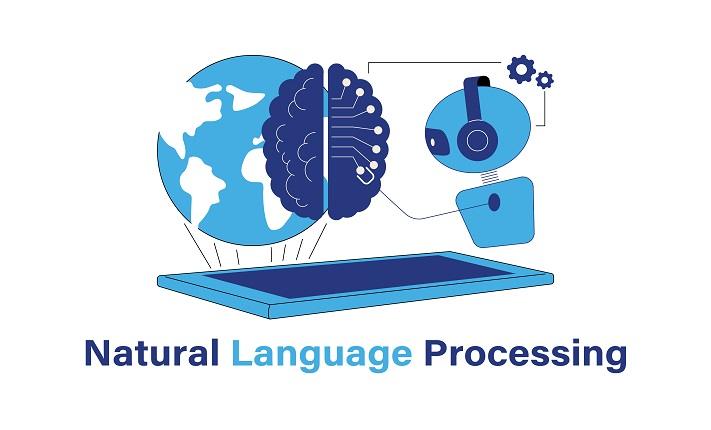In today’s digital age, the sheer amount of unstructured data generated through text—whether it’s social media posts, customer reviews, research papers, or emails—presents both a challenge and an opportunity. Understanding and making sense of this textual data is where Best Natural Language Processing (NLP) comes in. NLP empowers machines to interpret, understand, and generate human language, making it a key technology for text analysis.
Text analysis is at the heart of many NLP applications, from sentiment analysis to topic modeling and information extraction. In this blog post, we’ll explore the Natural Language Processing techniques for text analysis and how these methods are helping businesses and organizations derive valuable insights from vast amounts of textual data.
1. Tokenization
Tokenization is one of the most fundamental steps in NLP, and it serves as the building block for many other text analysis techniques. Essentially, tokenization is the process of breaking down a large body of text into smaller, manageable pieces—known as tokens. These tokens can be words, phrases, or sentences, depending on the granularity required for the task.
For instance, in a document, tokenization would divide the text into individual words or sentences, allowing the system to process each part independently. Tokenization is a crucial step for tasks like Best Natural Language Processing techniques such as sentiment analysis, named entity recognition, and part-of-speech tagging, as it prepares the text for deeper processing.
2. Part-of-Speech (POS) Tagging
Part-of-speech tagging, or POS tagging, is a technique used to assign parts of speech to each word in a sentence, such as nouns, verbs, adjectives, and adverbs. This technique provides valuable syntactic information about the text, which can help in understanding its meaning and structure.
For example, POS tagging can help distinguish between homographs (words that are spelled the same but have different meanings), such as “lead” (to guide) and “lead” (a heavy metal). By using Natural Language Processing techniques, machines can identify the context in which the word is used and provide the correct meaning.
POS tagging is especially useful for tasks like syntactic parsing, information extraction, and question answering. By implementing accurate POS tagging in NLP workflows, businesses can gain deeper insights into text data and improve the performance of downstream tasks.
3. Named Entity Recognition (NER)
Named Entity Recognition (NER) is one of the most powerful Natural Language Processing techniques used for extracting structured information from unstructured text. NER involves identifying and classifying named entities (e.g., names of people, organizations, locations, dates, and other specific information) within a body of text.
For example, in a sentence like “Apple announced a new product in San Francisco on January 10, 2025,” an NER system would identify “Apple” as an organization, “San Francisco” as a location, and “January 10, 2025” as a date. NER is crucial for text analysis tasks like information retrieval, content categorization, and automatic summarization.
NER is especially valuable in industries such as finance, healthcare, and law, where extracting entities like company names, medical conditions, or legal terms can be key to analyzing and understanding large volumes of text data. By incorporating Best Natural Language Processing techniques for NER, businesses can automate information extraction processes and make more informed decisions.
4. Sentiment Analysis
Sentiment analysis is one of the most popular applications of Best Natural Language Processing. It involves analyzing text to determine the sentiment or emotion behind it—whether the text conveys positive, negative, or neutral sentiments. This technique is widely used in customer service, social media monitoring, and market research.
For example, in a product review, sentiment analysis would help identify whether the reviewer had a positive or negative experience with the product. It can also be used to track public opinion, measure customer satisfaction, and detect emerging trends.
Sentiment analysis can be performed at various levels:
- Document-level (analyzing the sentiment of the entire document),
- Sentence-level (analyzing individual sentences), or
- Aspect-based (analyzing specific aspects of a product or service).
By using Best Natural Language Processing sentiment analysis techniques, businesses can gain real-time insights into customer feedback, brand reputation, and overall sentiment trends.
5. Topic Modeling
Topic modeling is an unsupervised learning technique used to discover the underlying topics in a collection of documents. This technique is particularly useful for large datasets where manual categorization would be impractical. Topic modeling algorithms like Latent Dirichlet Allocation (LDA) and Non-Negative Matrix Factorization (NMF) can identify themes or topics within a large body of text.
For example, if a company has thousands of customer reviews, topic modeling can automatically identify common themes such as “product quality,” “customer service,” or “delivery time.” This enables businesses to quickly categorize and analyze customer feedback without manual tagging.
Topic modeling can also be useful for content discovery, where businesses can identify emerging trends or gaps in their content. By leveraging Best Natural Language Processing techniques for topic modeling, organizations can uncover hidden insights from large-scale text data and improve decision-making.
6. Text Classification
Text classification is the process of categorizing text into predefined labels or categories. This technique is widely used for applications like spam detection, email categorization, sentiment analysis, and content moderation. Text classification is typically accomplished through machine learning models, which are trained on labeled datasets to automatically categorize new, unseen text.
For example, a news website may use text classification to categorize articles into topics like “Politics,” “Sports,” “Health,” and “Technology.” Similarly, businesses use text classification for customer support to automatically route incoming inquiries to the correct department.
By implementing Best Natural Language Processing text classification models, businesses can automate the process of categorizing large amounts of text data, saving time and improving efficiency.
7. Text Summarization
Text summarization is the process of creating a condensed version of a text while preserving its key ideas. There are two main types of text summarization:
- Extractive summarization (which selects important sentences or phrases from the original text),
- Abstractive summarization (which generates a summary by paraphrasing the original text).
For example, news organizations use text summarization to create brief summaries of long articles, making it easier for readers to quickly grasp the key points. In business, summarizing customer reviews or research papers can help professionals save time and make quicker decisions.
Text summarization, powered by Best Natural Language Processing techniques, can automate the process of condensing large documents, improving the efficiency of content consumption.
Conclusion
Text analysis is one of the most important applications of Natural Language Processing, enabling businesses and organizations to unlock valuable insights from unstructured data. From tokenization and part-of-speech tagging to sentiment analysis and topic modeling, the Best Natural Language Processing techniques offer a wide range of solutions for processing and analyzing text data.
By leveraging these powerful NLP techniques, companies can improve decision-making, automate processes, and gain a deeper understanding of customer sentiment, market trends, and emerging issues. To explore how Best Natural Language Processing can help you with your text analysis needs, contact us today!
Stay updated with our latest news and offerings! Follow us on Facebook, Instagram, and LinkedIn.


